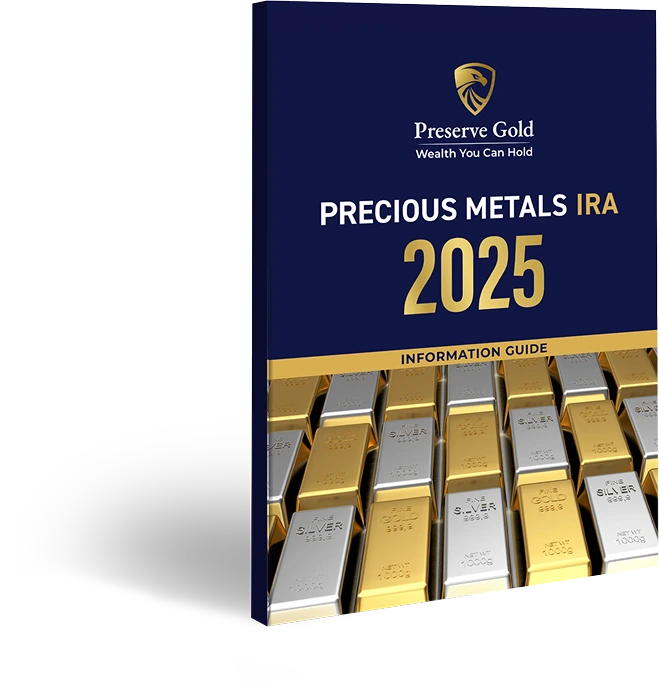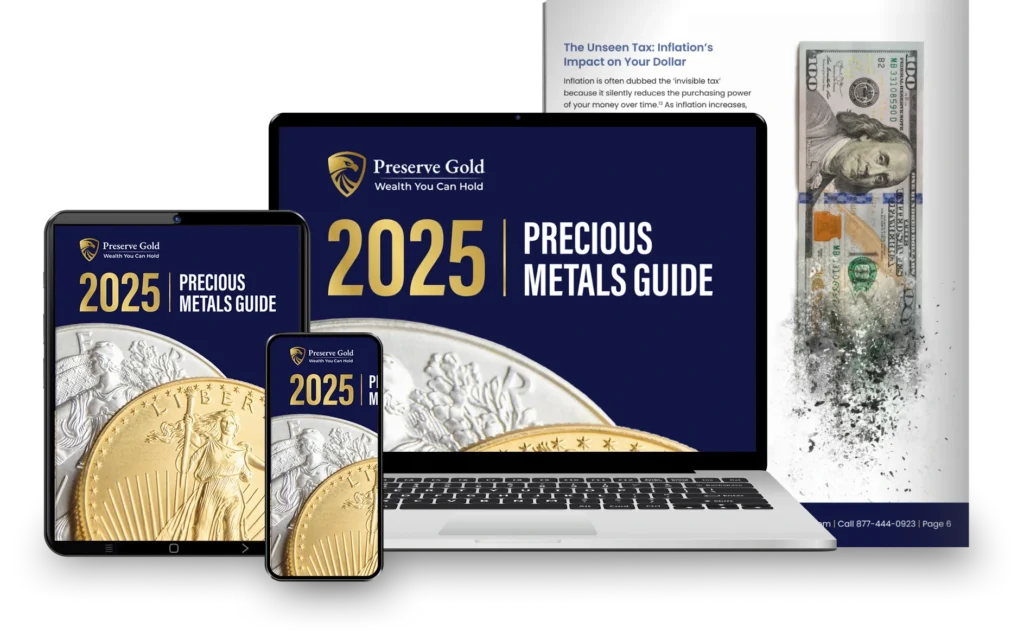If you have money sitting in a 401(k), you might be wondering how you can better invest those funds to save for your retirement. The U.S. dollar loses value over time as inflation grows, but precious metals can act as a store of value, hedging against inflation and giving you more confidence as you build toward the financial future you envision.
When asking, “How can I transfer my 401(k) to gold without penalty?” you have to understand that there are certain steps you must follow. Doing so helps you maximize the potential of your retirement and stay within the bounds of the law. Keep reading to learn everything you need to know about how to go about the process correctly.
Understanding 401(k)s and Gold IRAs
Before diving into the process, it’s crucial to fully understand how these two types of retirement plans differ to determine whether rolling over may be right for you:
- 401(k) plans are employer-sponsored retirement accounts that offer various tax advantages. With a 401(k), you contribute a portion of your wages that your employer can match by a certain percentage. Although 401(k)s can offer excellent growth while you’re with that particular employer, they only provide limited investment opportunities, so many individuals choose to roll them over to more flexible accounts once they change employers.
- Gold IRAs are self-directed individual retirement accounts allowing investment in physical gold and other precious metals. With a self-directed account, a custodian manages your transactions following Internal Revenue Service rules. You can still enjoy various tax advantages, assuming you adhere to all federal requirements, such as limitations on when you can withdraw.
Rolling a 401(k) over to a precious metals IRA involves moving your funds from the employer-sponsored account to a new self-directed account. Once the funds hit, you can use them to purchase IRS-approved precious metals.
The Benefits of Transferring a 401(k) to a Gold IRA

So, why consider this option? Here are some of the primary benefits:
- Diversification: A gold IRA allows you to reduce your reliance on traditional assets like stocks, bonds, and the U.S. dollar. Because precious metals share an inverse relationship with traditional asset classes, they serve as a preferred diversification tool for many investors. During periods of economic instability when traditional assets crash, the precious metal tends to perform well, helping your retirement savings remain stable.
- Inflation hedging: Gold’s historical performance during recession periods shows it can effectively hedge against inflation. During the Great Recession, for example, it returned over 27% and 32% in 2009 and 2010, respectively.
- Enhanced stability: Because gold can hedge against inflation and perform well during economic downturns, it offers enhanced stability for retirement portfolios. The asset can remain stable during periods of economic instability, geopolitical tension, and more.
Methods for Transferring a 401(k) to a Gold IRA Without Penalty
For those considering going this route, here are the two primary methods for a tax-free transfer:
Direct Rollovers
With a direct rollover, your funds are automatically transferred from your 401(k) plan to your IRA custodian. Your custodian will then walk you through the process of purchasing IRS-approved metals and storing them in an approved facility.
No taxes are withheld, allowing you to avoid early withdrawal penalties. Many investors prefer this method because it is generally more straightforward, has fewer risks of penalties, and requires less paperwork.
Indirect Rollovers
With an indirect rollover, funds are distributed to you, the account holder, and you are given 60 days to deposit them into your new gold IRA. You will be issued a check with your name on it, and you will have to redistribute these funds within the required 60-day timeframe, along with the 20% tax withheld. You will face the early withdrawal 10% tax penalty if you do not complete the transfer in time.
Because of the inherent risks, many recommend the direct rollover option to simplify things. Your decision should depend on your circumstances and your financial advisor’s suggestions.
Common Causes of Penalties During Transfers
Penalties can occur for numerous reasons during the 401(k) rollover process. Understanding the common causes of penalties can help you avoid errors along the way. Here are the issues investors often face:
- Missed 60-day deadlines: Failing to redeposit funds within 60 days in an indirect rollover is equivalent to an early withdrawal, meaning you will face a tax penalty. You can avoid this issue by choosing the direct option.
- Issues with multiple rollovers: Attempting more than one IRA-to-IRA rollover per year generally violates IRS rules and can result in penalties.
- Ineligible metals: The government requires you to fund your retirement account with gold that meets specific purity and form standards. Investing in precious metals that fail to meet these standards can result in penalties. We recommend choosing a partner offering direct IRS-approved metal purchases to eliminate confusion.
- Improper storage: One of the most stringent requirements to keep in mind is how you must store your bullion. Storing bullion and other physical assets outside IRS-approved depositories can result in penalties. You can avoid this issue by working with a custodian who works only with the appropriate facilities.
Steps To Ensure a Penalty-Free Transfer

So, “How can I transfer my 401(k) to gold without penalty?” We recommend following these steps:
Consult a Financial Advisor
First, you should meet with a financial advisor for individualized guidance regarding the process and its implications. These advisors have a fiduciary duty to protect your best financial interests, and their advice could prove invaluable as you look ahead. They can help you understand the right investment options, rollover decisions, and tax implications for your unique financial situation.
Choose a Reputable Gold IRA Custodian
To open a self-directed gold account, select a custodian who will act as your account manager. They must have experience in precious metals investments to ensure compliance with all regulations.
Many such custodians offer direct precious metal purchases through their own dealers to streamline the process, helping to ensure that you’re purchasing approved metals. These custodians also pair you with approved depositories and can oversee all transactions, making everything quite simple.
You can find reputable custodians by comparing company reviews and certifications. We also recommend considering the custodian’s fees and their overall transparency. Again, your financial advisor can point you in the right direction if you’re unsure where to turn.
Verify IRS Compliance
Once you’re ready to fund your new precious metals retirement account, ensure your chosen products meet federal requirements. Your custodian should be able to provide guidance here, but you can also check IRS guidelines for additional confirmation. You must also ensure that your physical assets will be stored in an approved depository.
Maintain Documentation
Moving forward, be sure to keep detailed records of all transactions and communications. This can prevent issues in the future regarding required distributions or metal purity standards.
Are You Ready To Begin Your Rollover?
Now that you know the answer to “How can I transfer my 401(k) to gold without penalty?” you might be ready to start. At Preserve Gold, we simplify the process, ensuring everything adheres to IRS requirements so you can avoid penalties. When you’re ready to invest in a gold IRA, call us at (877) 444-0923 to learn more.







